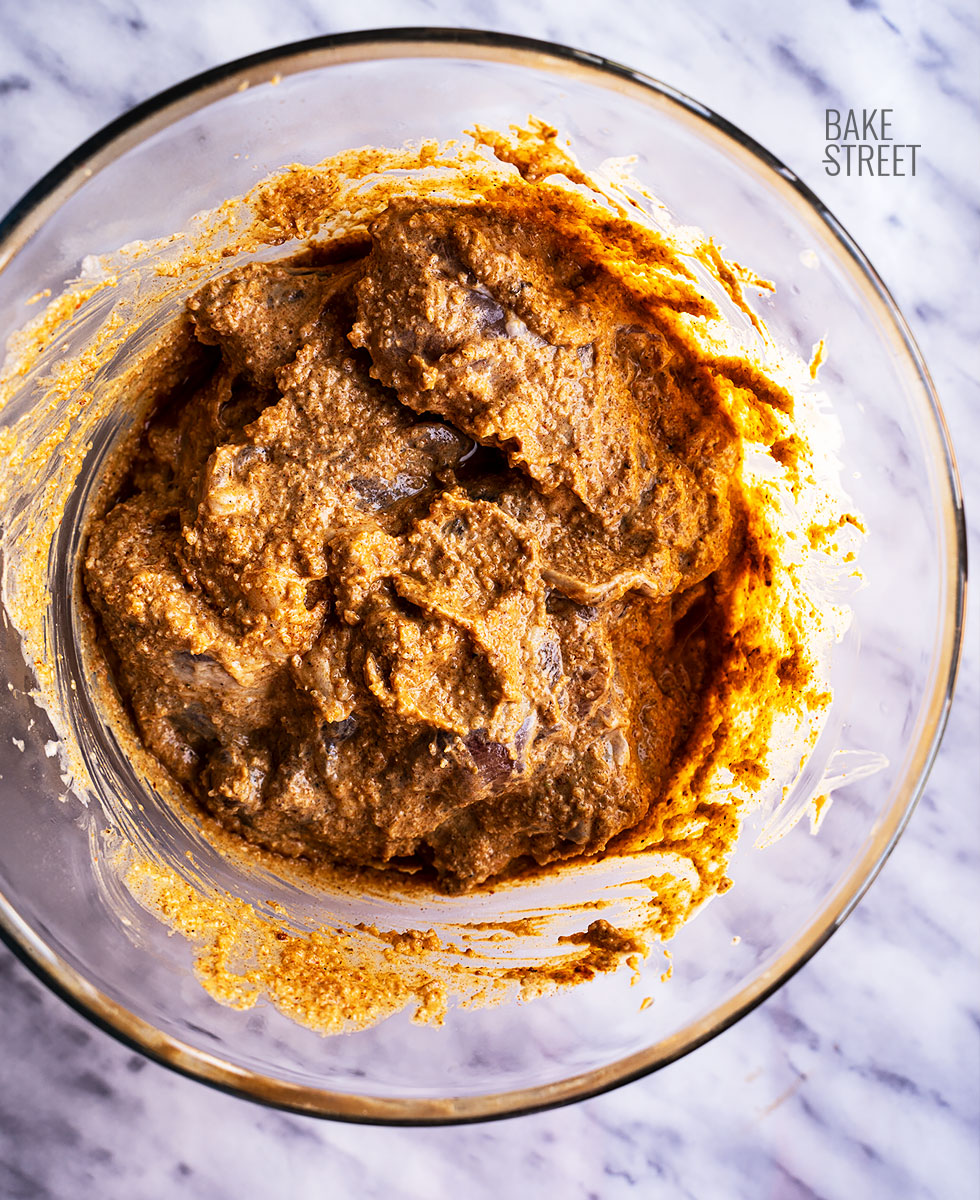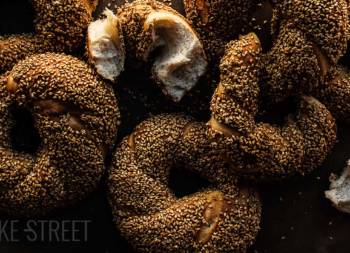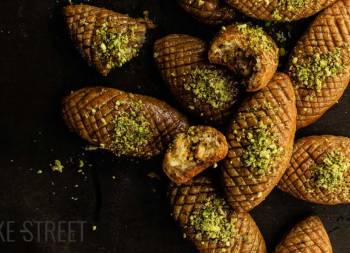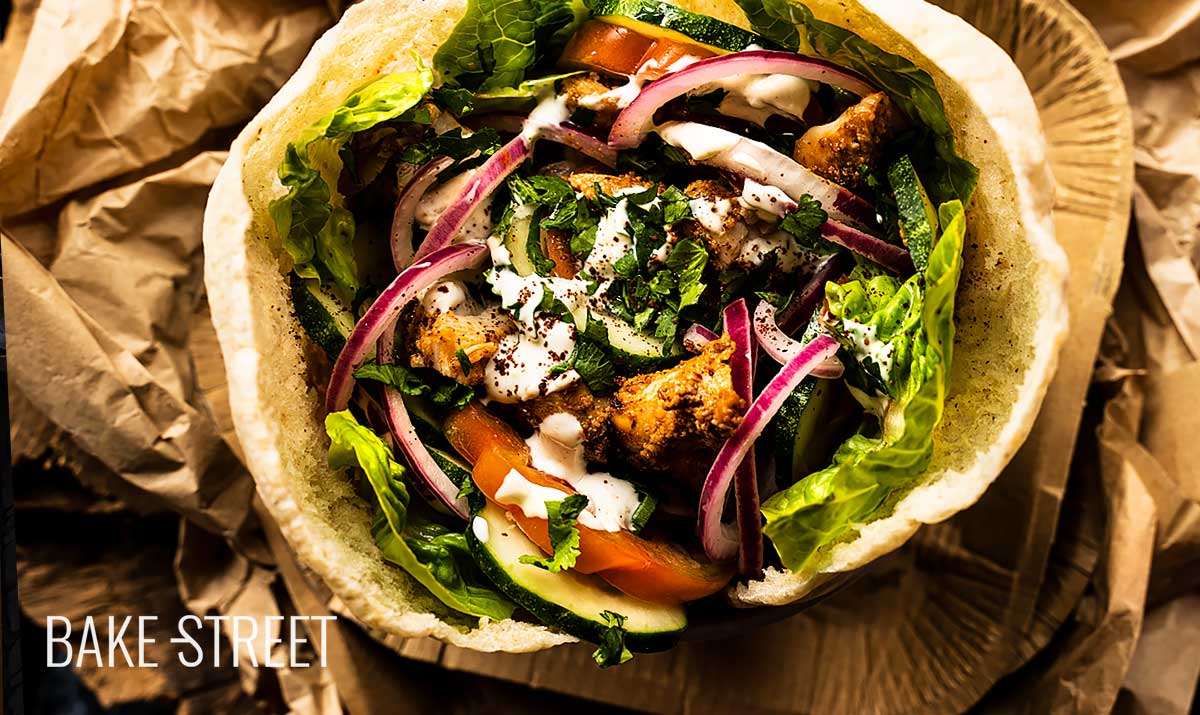
Chicken Kebab
If there’s one thing my son likes, as a good teenager, it’s Chicken kebab. Ok, it’s not that only teenagers like this kind of food, I love them too. But it’s true that he prefers this type of food to lentil stew, for example. He never complains about anything you serve him to eat, but he enjoys it infinitely more.
The fact is that I like them a lot too and I wanted to make a recipe at home that would give good results. That it is not easy to achieve a good final taste. I did several tests because the first ones I did gave me the feeling that I did not have the flavor I was looking for. But, the last ones I made had the approval at home, both for the meat and the yogurt sauce. So I’m not going to wait any longer to share it with you.
Kebab origin.
The word kebab comes from Turkish and means to roast or put something on fire. It is a very broad term that designates a long list of dishes of grilled meat, but they are not exactly what come to mind when we think of “kebab”.
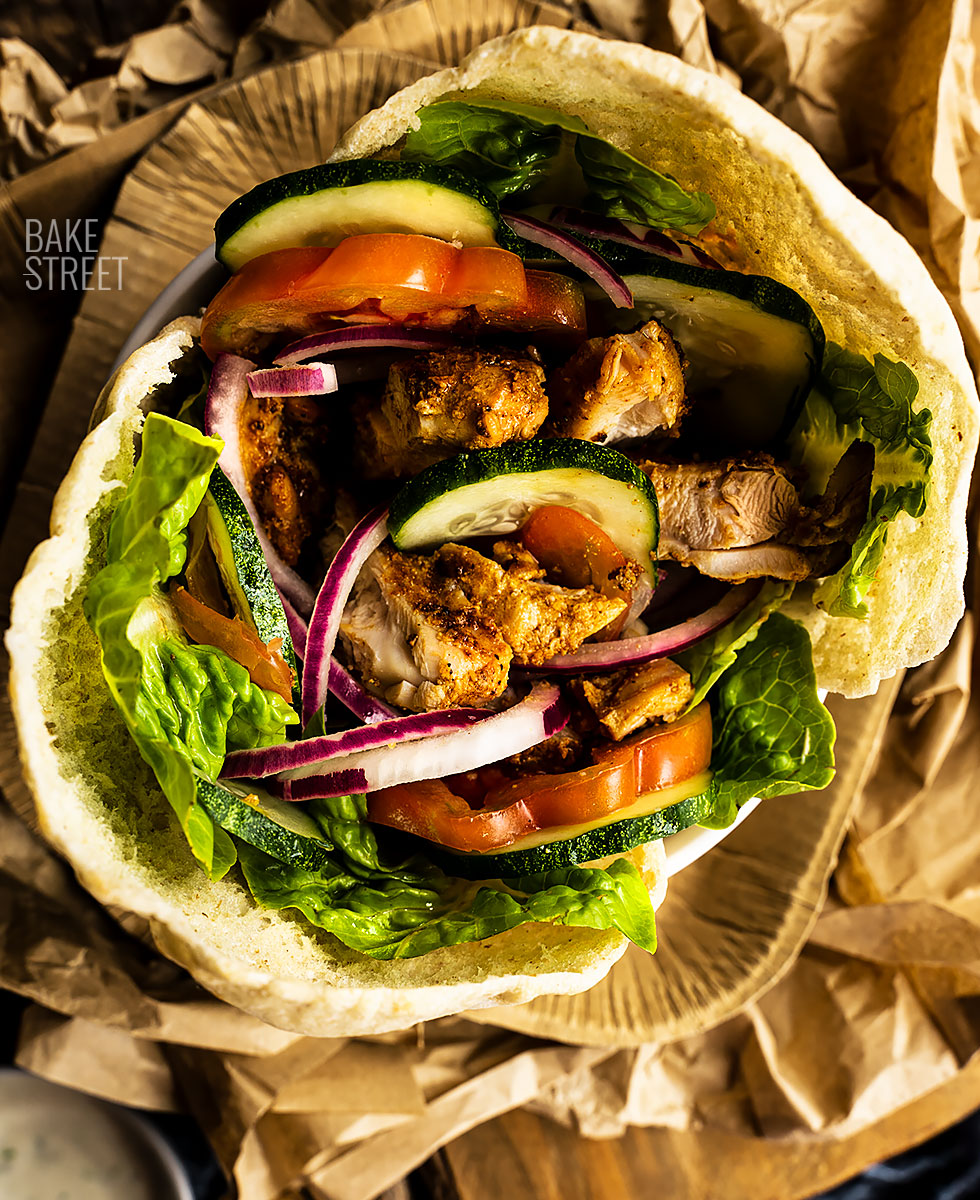
The first mention of the word kebab dates back to 1377 in a copy written in Turkish of “The Story of Joseph” (Kyssa-i Yusuf), an epic poem written by Seid Muhammad-Gali ibn Miruja (better known as Kul Gali). Kul Gali wrote the Kyssa-i Yusuf much earlier.
The word kebab comes from the Persian kabab and referred to the custom of the soldiers of the time to prick a large piece of meat on a sword and roast it while spinning it over the fire. This method of cooking was nothing new at this time. The oldest remains of wooden roasting sticks were found in a site in Schöningen, Germany, from the Lower Paleolithic period (300,000 years ago).
This meat roasted on a skewer is known as Shish Kebab in Turkey and could be considered the ancestor of the classic kebab with which we are familiar today. What we call kebab in Europe (also known as Shawarma, a word from the Arabic) is a dish of meat roasted vertically and cut into thin strips that is actually called Döner Kebab. Its name means grilled meat that spins.
If we go back to the year 1850, we come to a cook called Iskender Efendi.
Apparently Iskender, who lived in the city of Bursa, was the first to have the idea of putting the meat upright. It is not known exactly why he changed the position of the meat for cooking, but it certainly gained a lot of popularity. He created a dish that bears his name, Iskender kebab, roast meat covered with tomato sauce and goat yogurt accompanied by pita bread.
The vertical cooking method took a few decades to reach Istanbul, and it was there that the first Western travelers and journalists met him in the 1940s. The döner kebab of that time was served on a plate, accompanied by vegetables, rice or bulgur and pita bread. It was considered a true delicacy that was only served at important meals.
What we know today as kebab was born in Germany in the early 1970s and it is not certain who its real inventor was.
The official version, defended by the Döner Kebab Manufacturers Association, is that we owe the idea of putting the meat in a pita bread with onions and sauce to Kadir Nurman, a print technician. When he moved to Berlin from Stuttgart, he noticed that there were thousands of immigrants like him who had little time to eat and, usually, it was done in the street.
In 1972, Kadir Nurman decided to open a small kebab stand in front of the zoo. It didn’t take long for the business to be a success and from there, similar businesses emerged.
There is another version, by the Turkish chef Nevzat Salim. Salim opened a kebab stand in the city of Reutlingen, and claims that he began selling the meat inside pita bread since customers were staining themselves with the classic kebabs. He claims that he started selling doner kebabs in pita bread in 1969, three years before Kadir Nurman.
The last version that fights for the authorship of the kebab is a Turkish businessman named Mehmet Aygun. He claims to be the first to serve kebab on pita bread at his parents’ restaurant. Today he is the owner of the Hasir chain of restaurants, with six establishments in Berlin where they serve one of the best kebabs in the city.
Musical break.
This Friday I couldn’t leave you a video, but in exchange I’m going to leave you a song that I like very much. You know that from time to time I love to leave you musical recommendations … The fact is that I had to educate my son very well, because he has musical likings very similar to mine. In fact, we recommend songs and we both like them. One of the last ones he told me was “Blinding Lights” by “The Weeknd“. I think it’s perfect to start on a Friday 😉
Many times it is impossible to know the exact origin of an elaboration…
As in this case. All the information gathered in this regard does allow us to know that kebabs, as we know them today, were born in the 1970s in Germany and not in Turkey.
To distinguish a genuine kebab, according to the people who created it, it must be served on pita or yufka bread, but never with the bread dough used to make the lahmacun. The meat should be lamb or beef, but not chicken (here I could already consider that my chicken kebab is not a kebab… but that’s the way we like it at home!) As for the vegetables, it’s not supposed to bring any of them because an original kebab, if it’s made with good quality meat, doesn’t need any kind of garnish… But who doesn’t like to bite into a kebab and find a combination of crunchy and fresh textures of the vegetables along with the meat, bread and sauce? Holly Molly!
Different types of kebabs can be found depending on their presentation and ingredients.
- Lahmacun: Flat bread accompanied by meat and vegetables that are usually rolled. It is also known as “Turkish pizza“.
- Dürüm kebab: It is not made with pita bread, but with a thin flat bread that the Turks call yufka. It is made with the same meat, vegetables and sauces as the doner kebab, but it is presented rolled up.
- Kebab with pita bread: This is the traditional way to serve it, the famous döner kebab. Stuffed with meat, vegetables and sauces.
- Combined dish: It is a dish in which all the traditional ingredients of the kebab are combined, only they are not introduced in bread. They are usually served with rice.

Chicken kebab recipe
Ingredients for 3 serves
FOR THE CHICKEN:
- 3 boneless chicken thighs (one per person)
- 1 unsweetened Greek yogurt
- 2 Tbsp olive oil
- 1 tsp sweet paprika
- 1 tsp hot paprika
- 2 tsp garlic powder
- 1 tsp cumin powder
- 1/2 tsp cinnamon powder
- 1/2 tsp freshly ground black pepper
- 2 Tbsp fresh lemon juice
- 1 tsp salt
FOR WHITE KEBAB SAUCE:
- 2 unsweetened Greek yogurts
- 2 Tbsp mayo
- fresh lemon juice
- 3 small garlic cloves (15 g), smashed
- 2 tsp sugar
- 1/4 tsp cumin powder
- fresh parsley, chopped
- salt and black pepper to taste
GARNISH:
- pita bread (link recipe)
- sliced tomato
- thinly sliced red onion
- lettuce
- sliced cucumber
- sumac (optional)
- fresh coriander (optional)
- crumbed feta cheese (optional)
Instructions
FIRST DAY, AFTERNOON-NIGHT
Prepare the meat to macerate.
- In a bowl or glass container, add the yogurt along with the oil, spices, salt and lemon juice. Mix well until homogenized.
- Add the boneless chicken thighs and mix, making sure that all the meat is covered with the yogurt mixture. That way the flavors will be well impregnated.
- Cover the container or cover with film and refrigerate until the next day.

SECOND DAY
Make yogurt sauce.
- In a bowl mix all the ingredients until they are completely homogenized.
- Transfer the sauce to a container where we serve it, cover it with film and refrigerate it until it is ready to be used.
Cook the meat for chicken kebab.
- Remove the meat out of the refrigerator 30-40 minutes before cooking it.
- Place a large frying pan on medium heat and pour in a little olive oil, just enough to cover the entire base of the pan with a thin layer.
- Once it is warm, place the marinated chicken thighs, with the mixture smeared on the surface, on the frying pan.
- Cook for 4-5 minutes on each side. Before removing the meat, we must make sure it is well done. The internal temperature must be 165ºF/74ºC to have a safe cooking. We will prick several parts of the meat with the thermometer to make sure it is correct.
- Take it out and set it aside.
Assemble chicken kebab.
- Cut the pita breads at the top, so that we simulate a pocket.
- Cut the chicken in thick strips, set aside.
- In the base pour some yogurt sauce, fill with lettuce leaves (cut or julienne), tomato slices, cucumber and red onion.
- Place the chicken in pieces and finish with more cucumber and onion.
- If you like feta cheese, in this step, you can crumble it a bit on the surface.
- Cover with yogurt sauce to taste, sprinkle with sumac and fresh coriander (the latter two can be omitted if you wish).
- Serve.
Notes for perfect chicken kebab
- We can use store-bought pita bread if we wish, but if you dare to make them at home I assure you that the result will be infinitely better. You have the video recipe in this link.
- My pita breads were very big, like Mary Poppins' bag, impossible to fill them! So I arranged the filling extended.
- The boneless chicken thighs are much tender than any other cut of chicken. Of course you can use breast if you want, but the result will be much drier.
- It is important to macerate the meat, at least for 4 hours, to allow the aromas to be well impregnated. The ideal is to leave it overnight.
- The toppings are totally optional, adapt them to your personal tastes.
- The ideal is to consume them as we cook the meat and fill the kebabs.
- The yogurt sauce can be kept refrigerated for 2-3 days.

In short, if this weekend you want to give yourself a good whim, do not hesitate to try this chicken kebab. I know that it cannot be included among the original and traditional ones, but the juiciness of this meat is ideal. I won't deny that I don't like a lamb kebab either, because it's not true. I like it and a lot.
The thing is that I should look at how to cook this meat for this particular elaboration. Because I don't think it's at all easy to achieve the results we are really looking for. And without adding additives like phosphates that help stabilize and retain water to better stick the different pieces of meat.
And, if you are really inspired, try to make the pita breads too! The final result will have nothing to do with it, promise!
I wish you a wonderful weekend!
Big hugs,
Eva
Sources: Gizmodo
